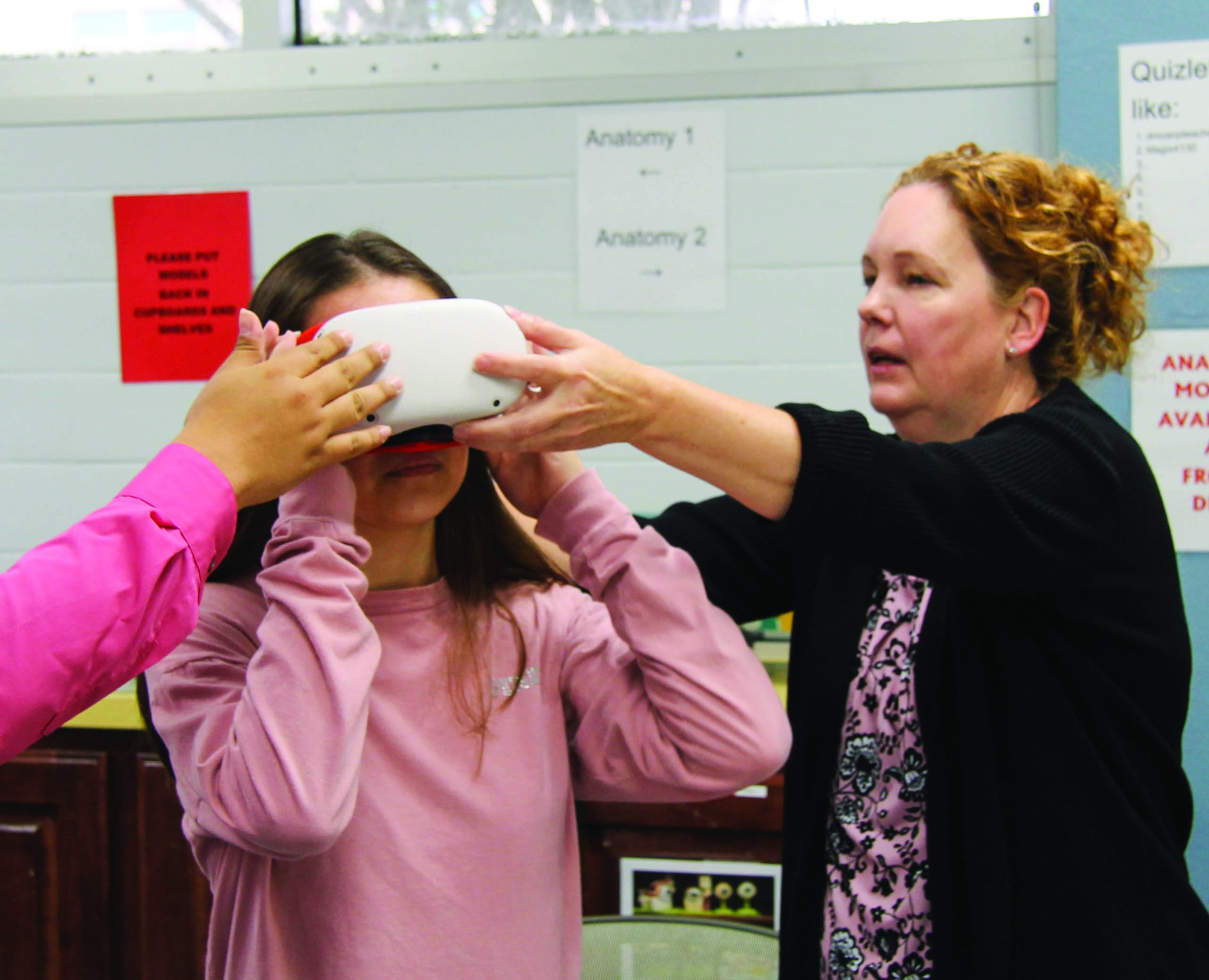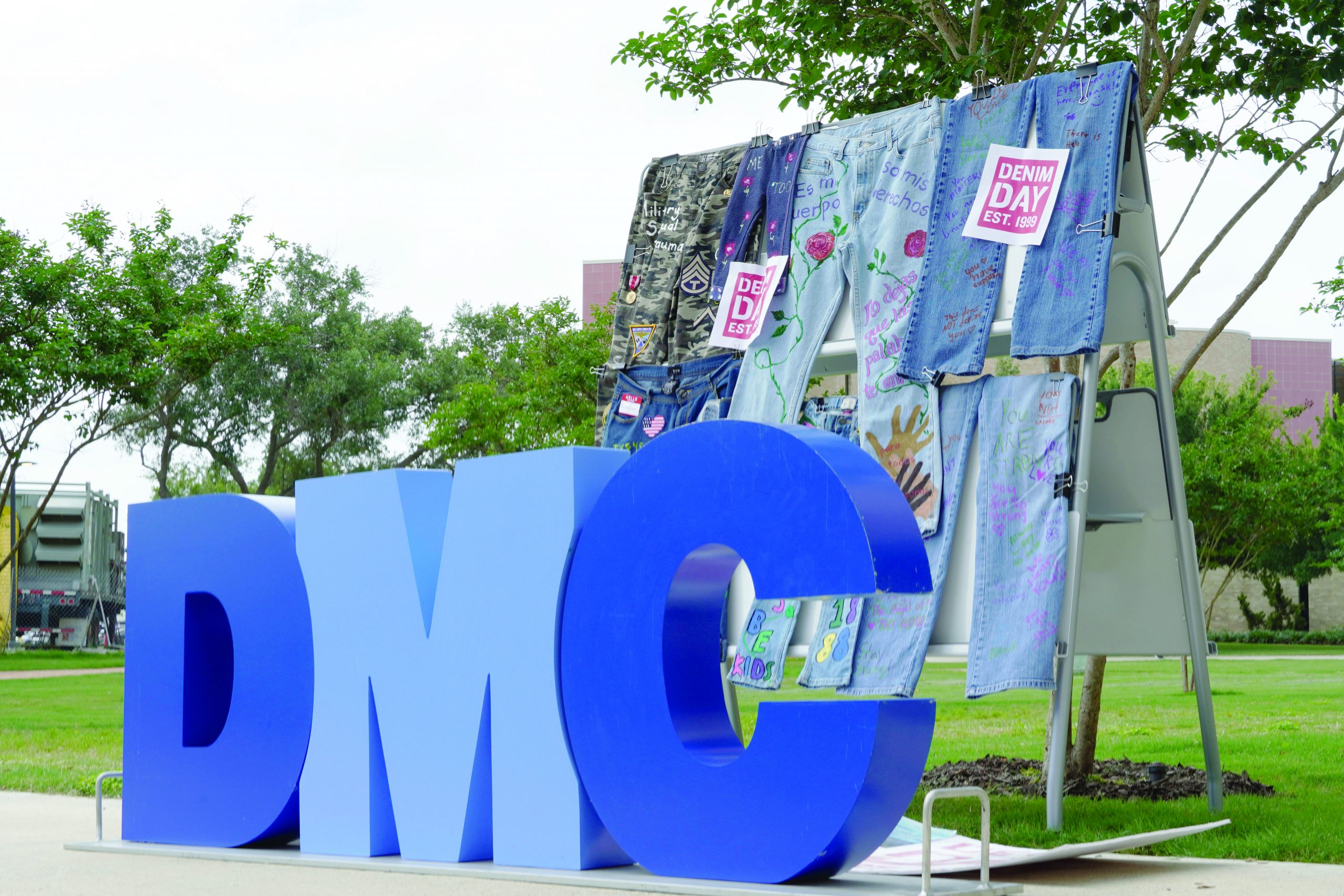Student Success Center unveils new virtual reality headsets for student use
Students studying anatomy and physiology got some high-tech help on April 26.
The Student Success Center on Heritage Campus introduced five new virtual reality headsets for use as study aids. The set consists of five color-coded Oculus Meta Quest 2 headsets with two wireless controllers each.
Each headset includes a program known as the 3D Organon Platform, which provides access to multiple life-like anatomy models for students to manipulate and examine at a fraction of the cost of physical models. The virtual models also include built-in labels and an increased ability to deconstruct the model and examine individual pieces of the human anatomy.
Center Director Omar Villarreal demonstrated the new headsets at the event.
“The physical models can only help us in so many ways, and we only have so many different models,” Villarreal said. “So being able to offer 15 different human body systems in virtual reality means that we don’t have to spend the funds on new models.”
The software also includes a form of group space compatibility, allowing multiple students to interact with the same 3D model in a shared virtual space.
The Student Success Center received the five Oculus Meta Quest 2 headsets as part of a pilot program aimed at developing tutoring in a virtual space. The center has also applied for a $150,000 grant for the purpose of acquiring 25 more headsets for the pilot program, working in collaboration with Collegiate High School.
The demonstration showed that there is a learning curve that some students may struggle with at first, but the Student Success Center will now offer training to help students not familiar with VR equipment to adjust. One student who had the chance to test a headset prior to the showcase, Jasmine Hablik Longoria, described the experience of using one as “weird … but a good weird.”
Villarreal was excited to show off the new hardware and is hopeful for where the program will lead.
“It’s affordable, and it’s fun, and it brings students in, and I think it’s going to be the way of the future when it comes to getting an education for our students.”
Students interested in using the headsets to study for their A&P final can check one out for use, as well as receive training on how to use it, at the Student Success Center, Room 111 in the St. Clair building.






Upon reading this article, I love the idea that VR has a possibility of doing something that could benefit a career field the way it has. I think the program “3D Organon Platform” is such a creative and fun method, where you could visual take apart an anatomy model, work with others and learn from this experience. I’d love to see how far this program can take those willing to try.
I love to see new technology implemented in academia. I think allowing students to view the human body systems in this way will provide them with a unique prospective and make the understanding easier. I hope to see virtual reality extended to other fields and have its potential taken advantage of.
This is such a great advancement for our college. I am even more excited to know that my high school has something to do with this achievement. The Oculus headsets will for sure help students in their education. Updates about the grant should be published too. It would help people keep informed on this subject.